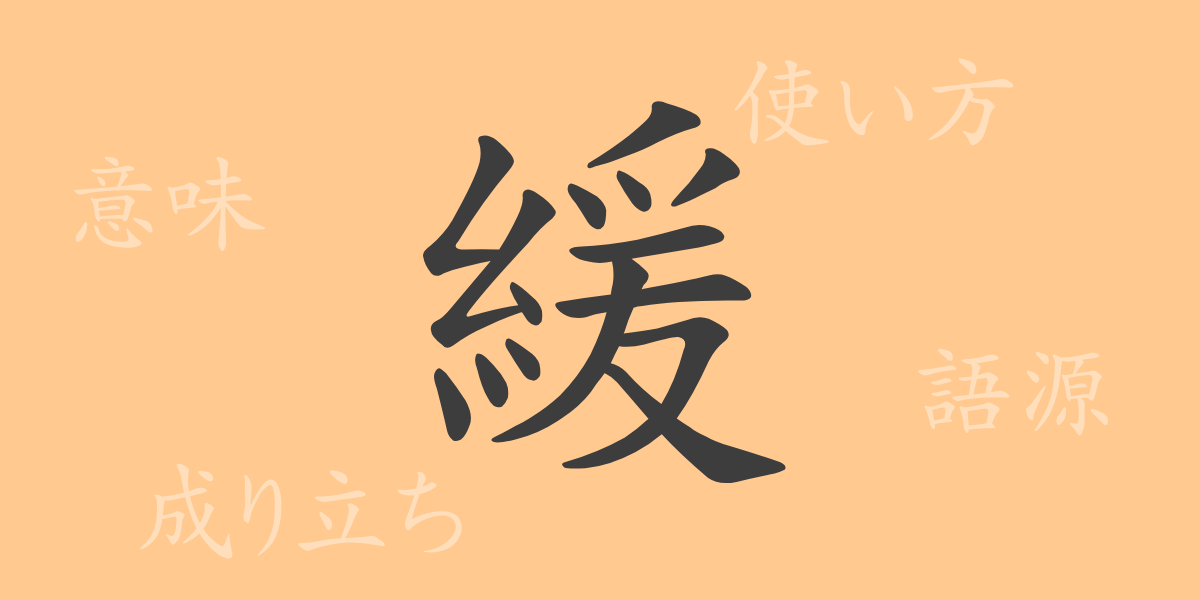The beauty of the Japanese language is also inherent in its characters. Each kanji has a history and carries a unique meaning and sound. In this article, we spotlight the commonly used Japanese kanji “緩” (Yuru-i), delving into its profound world. We will explore how this kanji, frequently seen in daily life, came to be, how it is used, and what roles it plays.
The Origin (Etymology) of 緩
The kanji “緩” (Yuru-i) has its origins in ancient China. It is composed of the “糸” (ito) radical, which means “thread,” combined with the phono-semantic compound “爰” (en). Originally, “爰” indicated a place and implied movement, which evolved to represent the idea of something moving loosely. With the addition of “糸,” the image of a loosened thread is emphasized, and thus the character “緩” came to depict the state of a thread becoming loose.
The Meaning and Usage of 緩
The kanji “緩” (Yuru-i) carries meanings such as “loose,” “gentle,” and “to loosen.” It is used not only to describe physical looseness but also in the context of time and attitude. For example, “緩やかな坂” (yuru-yaka -na- saka) refers to a slope that is not steep, while “時間に緩い” (jikan- ni -yuru-i) means not being strict with time. Moreover, “緩める” (yuru-meru) denotes the action of loosening something that was tight, with its antonym being “締める” (しめる/shimeru).
Readings, Stroke Count, and Radical of 緩
“緩” (Yuru-i) has various readings in Japanese.
- Readings: The on’yomi (Sino-Japanese reading) is “kan”, while the kun’yomi (native Japanese reading) includes “yuru-i”, “yuru-yaka”, “yuru-meru”, “yuru-mu”, and others.
- Stroke Count: It has a total of 15 strokes.
- Radical: The radical is “糸” (ito-hen).
Phrases and Proverbs Using 緩 and Their Meanings
There are numerous idioms, set phrases, and proverbs that include the kanji “緩.” Here are some examples:
- 緩急 (kankyū): The degree of urgency in matters or their change.
- 緩慢 (kanman): Acting in a leisurely or lazy manner.
- 緩和 (kanwa): Alleviating harsh situations.
- 弛緩 (shikan): The state of being relaxed or loosened.
- 緩々 (yuruyuru): Being very loose.
These idioms and phrases showcase the breadth of meaning “緩” brings to Japanese expressions, enriching the nuances of the language.
Summary of 緩
The kanji “緩” (Yuru-i) symbolizes flexibility and the nuances of change in the Japanese language, both in form and meaning. From gentle slopes to the flow of time and people’s attitudes, this kanji is used to express various degrees of “looseness,” teaching us about the richness of Japanese words. When you come across “緩” in your daily life, remember the history and meaning behind it. It may be a step towards a deeper understanding of the Japanese language.

























